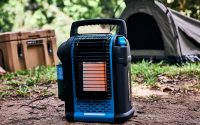The Ideal Bike Packing Bags for the Ultimate Cycle Touring Experience
The cyclists’ desire for self-sufficient travel on any terrain has raised the popularity of bikepacking. From ultra-endurance races that cross continents and mountain ranges to weekend escapes from the city to becoming the ideal activity for a healthier lifestyle, bikepacking is here to stay!
Types of Bikepacking Bags
Frame Packs
Frame packs are designed to enable storage within the triangle formed by the top tube, seat tube, and downtube of a bicycle. A series of velcro straps are usually used to secure it. There are available frame packs for full suspension, hardtail, and rigid bikes. While each bag should be custom-made to fit a bike’s unique frame, some universally sized bags are available commercially that will fit most bikes.
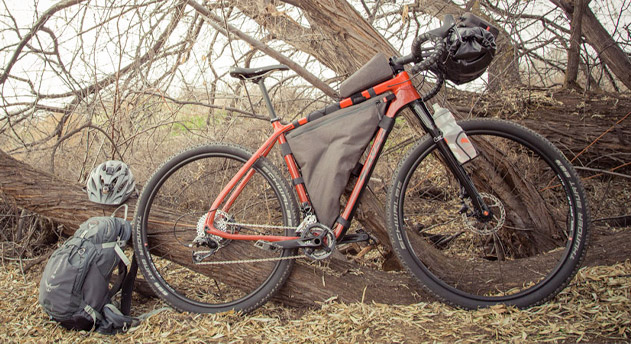
Because of its low centre of gravity, frame bike packing bags are great for storing heavier items. Smaller frames and full-suspension ones will have more limited capacity. And for those who prefer the option of mounting two water bottle cages, there are half/partial-frame bags available.
Zips are the weakest part of the frame pack. Avoid the temptation to cram as many items as possible into the zip, as this may easily break it. Several zipperless frame bags on the market are suitable for longer journeys where reliability is more important than convenience.
The main compartment on one side — usually the drive side — and a zippered flat pocket on the other are standard features of frame packs. This is particularly useful for keys, wallets, or other miscellaneous items. Nowadays, most custom bag makers incorporate these features, resulting in bags with a flat pocket and multiple storage areas. For the incurable organisers, frame packs with multiple compartments or dividers are also available.
On the other hand, if you can keep your list slim and trim, the half-frame bike packing bags are worth considering. These are usually long and skinny and can hold a lot more gear than you might think. The large frame triangle on gravel bikes allows for two water bottles in addition to the pack. Furthermore, they are more versatile, lighter, and can be easily switched between bikes.
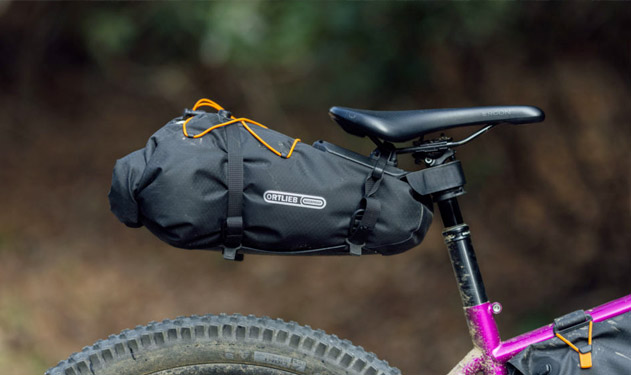
Seat Packs
The seat pack may appear strange to the uninitiated, but it’s an essential component of the bikepacking bag kit. Its conical or missile-shaped body is sometimes wedged between the saddle rails and strapped to the seat post. The volume of most seat packs starts at 5 litres and goes up to 14 litres. When compared to the traditional panniers, they are wind resistant and are much lighter. They do not flap around noisily when riding off-road and don’t catch on your legs, making those inexorable hike-a-bikes more bearable.
While most seat packs on the market claim to be waterproof, water-resistant options are becoming increasingly common. Most classic designs are also water-resistant – the fabric is waterproof, but the seams aren’t sealed.
Handlebar Packs
The most natural place to store gear is on the handlebars. Since the bicycle’s invention, people have been strapping bags to the handlebars. Rugged handlebar connections, anti-abrasion patches to prevent damage from gear levers, and additional accessory pockets are all features of purpose-built handlebar packs. Keep your front load light as a rule of thumb, or your bike’s handling will suffer.
Harnesses are another popular way to transport multiple drybags or loads too long to fit anywhere else. A slimmer roll is preferable for bikes with suspension forks, while a harness can have numerous items stacked within the cradle. They are highly adaptable and, in most cases, less expensive.
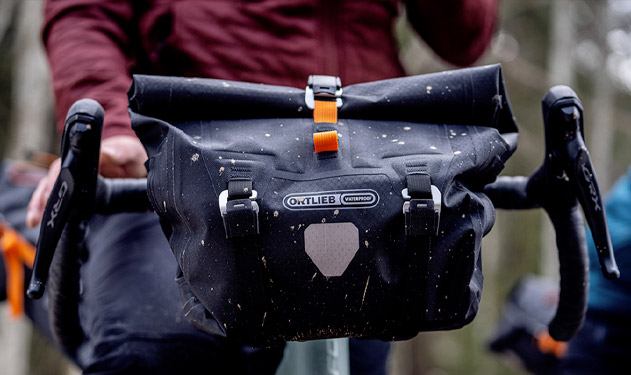
The maximum length and diameter are other essential factors to consider when purchasing a handlebar roll. Consider a skinnier roll that can be packed long if you’re using big wheels with a small frame or front suspension – the downside is that they’re a little harder to pack. For instance, the medium-size roll is ideal for a short-travel hardtail. Whereas, for a longer travel bike, consider the small version.
However, when it comes to Drop-Bar bikes, you will need to get more creative as the space between the drops is limited. A large roll that can be packed short is worth considering here.
Peripherals & Accessory Bags
Soft bike packing bags can be difficult to access quickly on the road. On the other hand, the accessory bag is a great way to add more packing space to your kit. In addition, stem bags, also known as feed bags, are can-shaped bags that fit at the stem and handlebar great for keeping snacks and can be easily accessed while on the go.
Another great accessory for snack storage or other small items that require quick access is top tube bags. These are attached to the steerer tube and top tube to form a shape that resembles a motorcycle gas tank. Given the quick-thinking nature of cottage industry manufacturers, there are plenty of other clever accessory bags that companies have released. One of these is the downtube solution. The downtube bag is convenient for carrying a toolkit on your bike. Most bag manufacturers also make accessory pockets to attach to their handlebar bags, allowing for convenient storage of items such as a mirrorless camera.
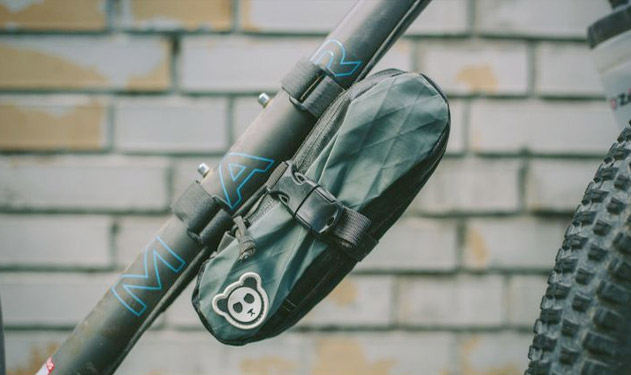
The Best Bikes for Bikepacking
Road Bikes
Road bikes can also be used as bikepacking bikes, and many people do so on the road or bike paths. Exploring new places on quiet roads can provide the same sense of adventure, freedom, and connection to nature as self-sufficient travel and camping.
Gravel Bikes
Gravel bikes are becoming more popular for bikepacking because they offer a good balance of road speed and off-road capability, allowing you to cover long distances quickly when needed while also venturing off the beaten path on bridleways, trails, and dirt roads.


